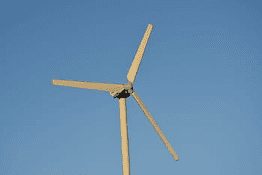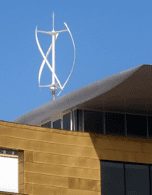Day 51: Renewable Energy II—Wind Power
Dear Student,
Throughout ages past, wind power has traditionally been used to power grain mills and water wells. It’s still used today to directly power water pumps with multi-bladed propellers driving low-speed gears. With sufficient wind, these mechanical pumps are highly efficient, but they do require annual maintenance, like greasing of gears and other upkeep.
And, of course, wind power really only makes economic sense if you live in a windier place than most and location of a turbine is key to success. You also need to make sure it’s legal… zoning laws might be an issue.
However, if it’s feasible, there are many benefits to wind power. It’s often available when solar power isn’t. If strong consistent winds are present, there is a low cost per kilowatt. Using it will lower your carbon footprint.
Using wind power to run mechanical or electrical water pumps from wells or streams to raised storage tanks can allow for constant water pressure and can help store energy on your homestead for use when there is no wind.
The most common downsides of wind turbines are noise and bird safety. Sound pollution is not usually a problem, though some whirring will be heard as you get closer to your turbine. The danger to birds is minimal (and has been greatly overstated by proponents of the oil industry).
Wind Generator Basics
Until recently, a consistent average wind of more than 12 miles per hour was needed for wind-supplied electricity (which is more wind than you think). New small wind turbines that can produce power from as few as 8 miles per hour are now available.
Simply put, a wind turbine converts the wind’s energy into power for your homestead. The wind turns the blades, this turning power cranks the generator, and the generator produces power.
A wind generation system requires:
- A controller
- Storage batteries (deep cycle; enough to last through windless periods)
- An inverter (power-converting unit)
- Wiring
- Electrical disconnect switch
- Grounding system
- Foundation for the tower
- Tower
- Turbine
- Brake
If you have sufficient wind and a suitable turbine, you can power your homestead and perhaps even sell excess power back to your local grid if you’re close to it. If grid tying is not an option but you have a neighbor who needs power, installing a larger and more efficient turbine might be profitable.
If you go it alone, size your system for your current needs… but if you have a little extra money, give thought to your homestead’s future power needs. Installing infrastructure to allow for expansion later could save money in the long run.

Relying solely on wind for the power on your homestead is better suited for quite windy or cloudy environments; solar might be better in sunny climates. That said, small wind turbines provide good backup for a solar system for dark, windy days. Keep in mind, too, that wind resources can have considerable seasonal variation.
In valleys, locate a turbine either on your highest point or a less useful low area. Mid-slopes get the least wind. Research what model, size, and structure best suits your site. Props should be braked during high winds and storms to prevent damage (automatic brakes are available).
Most turbines are mounted on towers to get them above wind brakes and obstructions. These towers can be bought with your turbine but if you have assembled a workshop you could build one yourself or have one made for you locally.
Wind turbines have gears inside to increase the revolutions per minute; 1500 RPM is needed for electrical generation. Horizontal axis turbines with two or three blades that turn to face the wind are the most common type of turbine. The energy of the wind increases by the cube of the speed of the wind.

Vertical axis turbines are becoming popular; they are less intrusive and are becoming more efficient.
Modern wind generators have a long life (20+ years with minimal maintenance) and commercial systems are getting cheaper all the time. It usually doesn’t make sense to try construct one from scratch unless you have good mechanical and electrical skills.
If you are looking to get into larger scale wind power generation you must do your research carefully. Use wind charts from a local met office to estimate possible wind speed. Use an anemometer (wind gauge) to record the wind for as long as you can afford to (up to a year if reliable wind data isn’t available).
Power output from small turbines ranges from less than 100 watts (0.1 kW) up to any capacity. Turbines of 5 to 12 feet in diameter can produce 1 to 10 kW in optional wind conditions. Most turbines are rated for optimal performance of 25 mph winds
